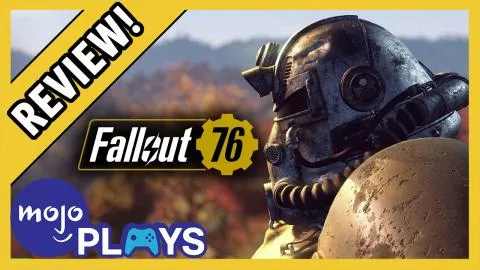Fallout 76 Review - A Sad, Hostile Wasteland

Back in May of 2018, Bethesda launched a mysterious twitch stream that culminated in a teaser trailer for Fallout 76. At the time, there was mass online speculation about what the game actually was - that is until Kotaku News Editor Jason Schreier reported the game would be a, quote, “Online Survival RPG.” Fans seemed to be split down the middle, with some willing to give the game a chance while others arguing that a multiplayer Fallout game would take away what made the series special to begin with.
That all changed with the beta. Once fans got their hands on the game, the online discourse around it seemed to shift pretty quickly, as skepticism quickly turned to outrage. But did fans have a right to be upset over what 76 actually was, or were they simply disappointed that what they were playing wasn’t Fallout 5?
So what do you actually do in West Virginia? The short answer is: not much. The gameplay is really split into three categories: questing, resource gathering and base building, and exploration.
While going through the quests in Fallout 76, you soon begin to notice a pattern: almost all of them are identical. You’re presented with a dot on the map; once you arrive at that point, you’ll be welcomed by enemies; after either killing or avoiding these enemies, you must interact with a computer terminal or listen to a holo tape recording; this triggers the next quest. Fallout 76 has gotten a lot of negative attention for not including friendly NPCs, and their absence is felt from the get-go as the quest-givers appear in the form of disembodied voices. There are more memorable moments to be found by just exploring and stumbling upon interesting landmarks because the quests provide practically no satisfaction as you run and shoot from terminal to terminal.
On your stroll to your next terminal, you might want to pick up some junk. Much like in Fallout 4, 76 encourages you to collect random items and break them down to crafting components. With these components, you can craft, repair, and modify weapons and armor, or build your camp. Like the settlements in Fallout 4, your camp is your personal and moveable home base. If you like the base building in Fallout 4, this is more of the same, with the added benefit of being able to move your base if need be. If you didn’t like the base building system, rest assured you can get by with the bare minimum: a bed, a cooking station, workbenches, and a stash box - virtually everything else is superfluous.
As for PVP, it becomes clear from your first combat encounter with another player that Fallout’s shooting mechanics would have to have been completely revamped to make it work. As it stands, PVP feels chaotic, and the balancing is all over the place.
But by far the most inexcusable aspect of “Fallout 76” is the enemy A.I. When we first entered West Virginia, large, higher-level enemies in the distance seemed intimidating, but as we progressed, it quickly became clear that enemies simply do not know how to handle taking on two enemies at once. At one point, while fighting a Legendary Super Mutant Brute a whole 16 levels higher than we were, this intimidating creature with a crown above its level and two stars next to its name simply stood out in the open as we emptied round after round into it until it died. Whether it’s the Scorched, MoleMen, or Snallygasters, all the enemies tend to stand around waiting for you to kill them.
War may not change, but the Fallout series has. “76” marks the biggest change in the series since it moved from an isometric RPG to a Bethesda-style 3D open-world game with the 3rd installment. It’s often been said that the first thing people do in a Bethesda game is try to break it. Not in a nefarious way: these games provide so much freedom that they often make for unintended emergent moments… like putting baskets on people’s heads in Skyrim to make sneaking and stealing from shops easier. This amounts to harmless fun in a singleplayer game but could have tremendous consequences in a multiplayer environment. There have already been troubling stories about gamers messing with the framerate in order to attack and move quicker, and servers crashing as a result of too many nukes being launched at once. Bethesda has provided a massive playground, but the game has buckled under the sheer number of people interacting with their game world.
Fallout 76 is an online service game like Destiny 2, The Division, and many, many others. And like those games, updates, and expansions will fundamentally change almost everything, for better or worse. The Elder Scrolls Online got off to a rocky start as well, but the dev team managed to right the ship and satisfy the community thanks to updates and consistent support. That could definitely happen for Fallout 76, but in its current state, the game feels unfinished, unpolished, and empty. While there are plenty of things to see, there isn’t much to do, and while that may change in the not-too-distant future, 76 probably should have stayed in the vault a little while longer.
